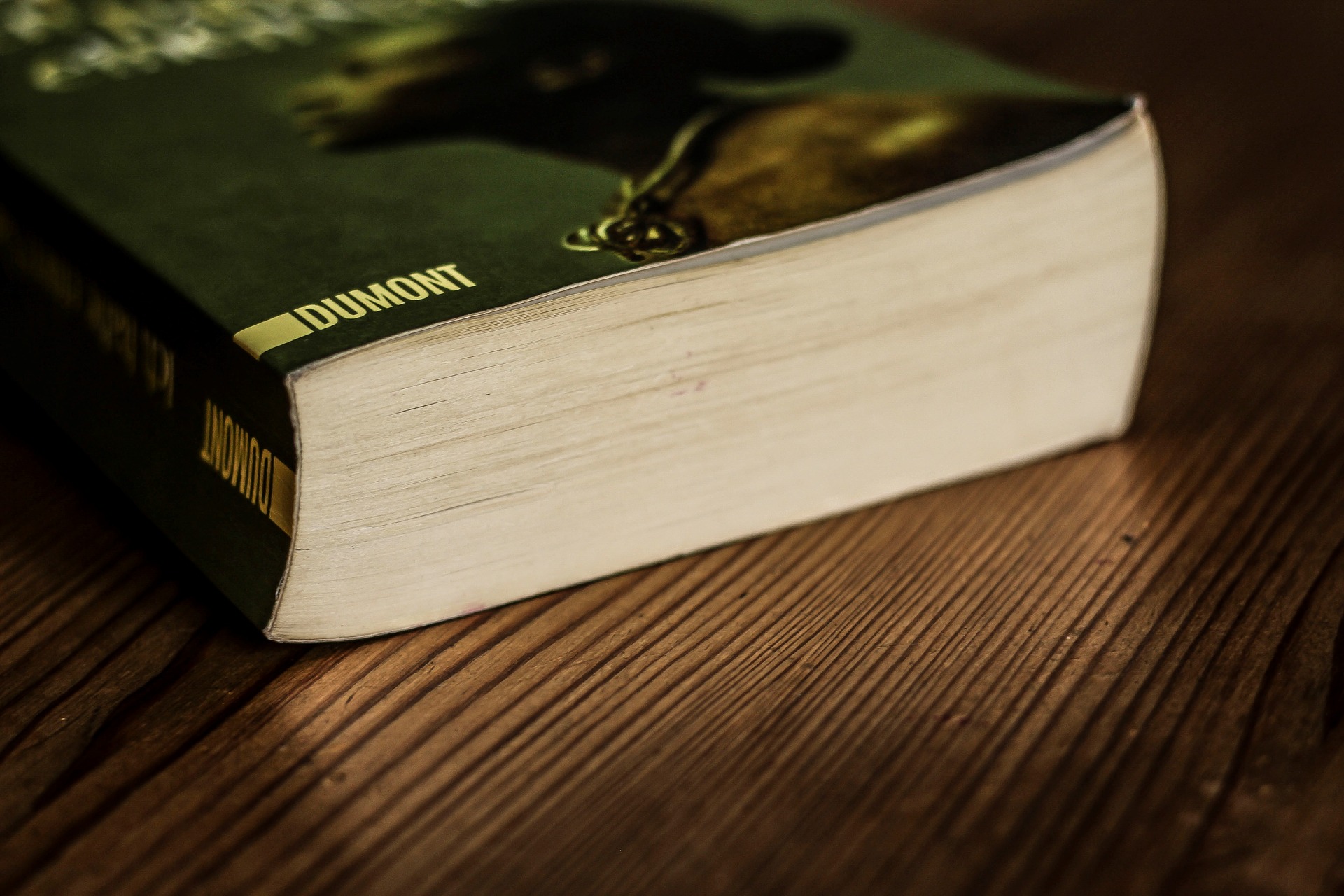In my last article, we discussed the differences between hardcover and paperback books. To recap: hardcover books are more durable but are costlier, while paperback books are more affordable but have paper-thin covers that are prone to damage.
While paperback books are the answer to costly hardcovers, did you know that there are two types of paperbacks that offer the choice of a more affordable price or relatively better quality? This is through mass-market paperback and paperback books (also known as trade paperback).
What Are Paperback Books?
If you haven’t read our previous article, here’s a quick recap on what paperback books are. These are known as “softcover” books that have thick paper or paperboard for a cover, unlike hardcover books that use thicker boards to protect the pages. Paperback books are glued to a thin spine rather than hand-sewn like hardcover books. While they have the same main content as hardcovers, they may lack supplementary content like a foreword from the author, illustrations, and additional content.
Because of these differences, paperback books are more affordable than hardcover books because it uses cheaper materials. However, it’s at the cost of durability: hardcover books are meant to last years on your shelf and can protect their pages from most external factors that can damage them. Paperback books, on the other hand, can be disposed of after reading and are more likely to fold, crease at the spine, and take on damage.
Paperbacks have existed since the 19th century. They traditionally come in three sizes: A-format (used for your traditional paperback novels), B-format (often used for trade paperback) and C-format (small pocketbooks). These are often used by less popular writers whose readers would be less likely to buy costly hardcover versions. More popular writers may also choose to publish paperback versions if they want to provide their fans with a low-cost version of the book. Considered as promotional products for authors, the type of book format depends on what the author thinks will sit well with fans.
Mass-Market Paperback vs. Trade Paperback
Generally speaking, the paperback is the solution to readers who can’t afford hardcover, but at the expense of the book’s quality. However, that isn’t always the case when you consider that there are two forms of paperback: mass-market paperback and the traditional trade paperback.

What is Mass Market Paperback?
The mass-market paperback is the most affordable version of the book as it has the traditional A-format size of 110 mm x 178 mm. The paper quality is usually low to medium, which means that it’s most likely not acid-free paper and will discolor or cause the words on the book to fade after a few years.

Because of the low-cost, these books provide the lowest profit margin. This is the usual format used by authors and publishers when a book is not expected to be a major hit or a financially successful book but they still want to get the content out without making a huge investment in it. For mass-market paperback with hardcover editions, these are released after the paperback edition. However, if a mass-market paperback surprisingly becomes a hit, publishers can opt to release a hardcover edition at a later date, though this is rare for most new authors.
Mass-market paperbacks are generally seen as disposable, hence the reason why you can find new paperback books being sold at airports, drugstores, and supermarkets; this is unlike hardcovers that are exclusively sold in bookstores or online. While it is acceptable to keep paperback books you enjoy reading, it’s also fine to donate or even throw away mass-market paperbacks you know you won’t read a second time. As of 2013, novels in the romance genre make up over half of the mass-market paperbacks.
If a mass-market paperback isn’t very profitable, a bookstore can “strip” the book. This means they will separate the book’s cover from its pages and then return the cover to the publisher for credit. The pages will then be sold to a recycling center to be pulped and made into new paper, but there’s a risk of the content being stolen and being sent to the black market to be sold. If you look at any of your paperback novels, you may find a publisher’s warning stating that if you bought a book without its cover, it was most likely meant to be pulped and therefore the author did not receive the money meant to purchase that book.
Bonus: What is the Future of Mass-Market Paperbacks?
In 2017, Publishers Weekly discussed the potential fate of mass-market books. In their article Is Mass Market Dying, or Just Evolving — Again? the American weekly trade news magazine pointed out this format’s steady decline over the years. The decline’s result, however, remained debatable. Did mass-market books suffer an incredibly slow death or did the format embrace a new form to make itself right in the market?
According to Publishers Weekly, the current state of mass-market books is a “microcosm” of the publishing industry’s state as a whole. New authors struggle to earn their big break while the “mid-level” authors are squeezed by major publishing houses. Although these publishers still support midlist mass-market writers, they prioritize selling mass-market books that fall under three categories:
- Bestsellers
- Major backlist titles
- Movie tie-ins
Also, the growing popularity of e-books threatened the success of mass-market books. Many publishers assumed that e-books would replace mass-market published titles. Contrary to their belief, e-book sales hit a slum, which proved that digital will not completely replace print.
Thanks to their smaller print, cheaper paper and shorter trim size, mass market titles remain essential. Some sources believe that these books will continue to encourage people to read more — end of the story.
What is Trade Paperback?
Trade paperback books are slightly more expensive than mass-market paperbacks but have better quality and are usually bigger than the average size at B-format, which measures 135 mm x 216 mm. Some trade paperbacks use acid-free paper and won’t discolor after a few years, but the cover is still similar to mass-market paperbacks and is still more prone to damage compared to hardcover books.

Because mass-market paperbacks are squeezed into a standard size, the formatting changes. For example, a quote found on page 50 of a hardcover book may appear on page 100 of its mass-market edition. Trade paperbacks, however, are usually edited for formatting so that the content on each page is the same as its hardcover counterpart. This is why you’ll always find trade paperback or hardcover for academic books.
Trade paperbacks are a step up from mass-market paperbacks in terms of quality, but it costs extra. A publisher can have both forms released, giving the readers the option to choose which kind suits their budget and needs. In fact, a book can have all three – a hardcover, trade paperback, and mass-market paperback – available for sale.
Nearly all advanced copies sent to critics and promoters are in trade paperback form because it is more cost-effective than the hardcover edition while still a step up in terms of quality. Unlike mass-market paperbacks, the cost to make trade paperbacks are more expensive, so they cannot be “stripped.” Instead, if a bookstore finds them unprofitable, they can simply return the unsold books to the publisher.
Trade Paperback in Comics
While fiction and non-fiction frequently use trade paperback editions, these are most popular in comic books. In such case, the term “trade paperback” refers to comic books that are compiled and reprinted. Don’t be confused between the two, though: just because they use the same term, a trade paperback in general publishing is not the same thing as a trade paperback in comics.

One original story arc in a comic series, for example, may have originally taken multiple comic books to finish. To create a trade paperback, the publisher compiles all these comics, reprints it, and sells it as the entire story arc.
A trade paperback in comics refers more to the content than the quality or how it was built. So, a comic trade (as it is also called) can have a hardcover or be smaller – regardless of its cover and size, the term refers to the comic collection itself.
However, a trade paperback is not the same thing as a graphic novel. A trade paperback in comics is a compilation of all the comics of a story arc; it’s already been printed and published previously. A graphic novel can come from something that has already been published previously (such as Twilight: The Graphic Novels published years after Stephenie Meyer published her original series), but it’s possible for a graphic novel to have original content.
How to Choose: Mass-Market vs. Trade Paperback?
In case hardcovers are out of the question due to affordability and your budget, you may still have the option to buy either type of paperback book. Take note that not all books will have both types of paperback, though. But if they do, which one should you pick?

If the price is your number one concern, you may have to buy the mass-market paperback because it offers the lowest price. Take note that we’re talking about new books here, though. If you’re really concerned about pricing, you can search book sales for second-hand books that have reduced prices. But take note that if the book is newly released or is a popular book, you’re very unlikely to find one for sale. And if you’re not the type who minds not reading content the traditional way, you can choose to buy a Kindle or e-book at a fraction of the book’s price.
However, the low price of the physical mass-market paperback means that you might be sacrificing quality. Expect that, years after purchasing the book, you may see your book discoloring and becoming more brittle due to its soft binding. But if you’re not going to use a book regularly or for long (for instance, a book on casual weddings bought for your preparations), this should not be a problem.
On the other hand, a trade paperback costs more, but the quality is certainly better. The traditional size of a trade paperback stands out in your bookshelf compared to the standard mass-market size, though take note that hardcovers are bigger than both. Also, a trade paperback may have acid-free paper, but this does not totally protect the book. After a few years, you’ll notice that the discoloration difference between both trade and mass-market, but you’ll notice that there is indeed some fading even in the trade paperback.
Everyone loves to read a good story, but take note that the type of book you purchase can affect the way you enjoy your book today and years from now. Two kinds of paperback book types offer the same content as their expensive hardcover counterpart, but both of them have their own strengths and weaknesses. Overall, your choice comes down to your budget and what you want to do with the book after finishing it.



